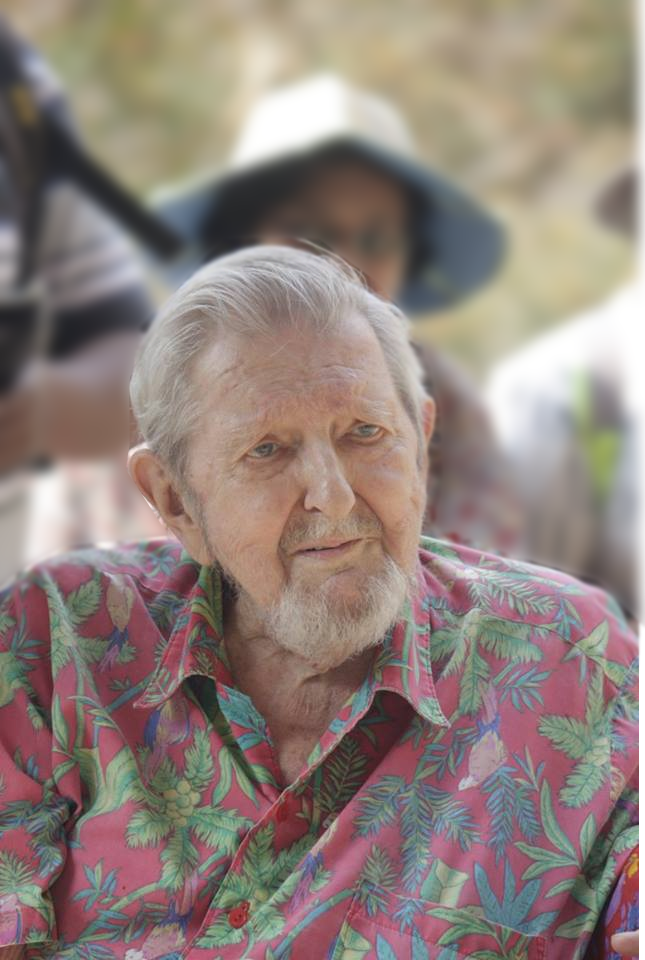Two centuries ago, a young British cavalry officer on a tiger hunt gate-crashed into the mouth of a man-made cave high above the Waghora river flowing along a horse-shoe shaped scarp in the Sahyadri mountains.
He entered the cave, now known as Cave No. 10, and found a great vaulted and colonnaded hall, its walls showing faint signs of paintings. Climbing up the five-foot high debris on the floor, he scratched his name and the date of his entry on a painted pillar: John Smith, 2nd cavalry, 29 April, 1819. Little did he know that he had not only discovered a magnificent art gallery of what was arguably the Golden Era of India’s past, but had also thrown open the floodgates of intense academic challenges and debates among archaeologists, epigraphists and art historians, that continue to this day. And Prof. Walter M. Spink has played a key role in this exercise, by painstakingly establishing the basic grammar of the complex, without which, the 30-cave complex, with paintings and sculptures of unsurpassed beauty, would even today, largely remain the enigma that it was, two hundred years ago.
Rich indeed was the chaos inherited by Spink: Caves in various stages of incompleteness, hundreds of Buddha images, painted as well as sculpted, stretches of fine wall paintings, along with still unpainted plaster, inscriptions devoid of dates and inscriptions hidden by wall plaster, revisions and modifications of floor plans, an odd fragment or two of a forgotten chisel, and almost no literary evidence, except passing mentions by Chinese travellers, that could put a definitive finger on this remarkable complex.
The ground-breaking ‘Short Chronology’
The 30 rock-cut Buddhist caves at Ajanta, declared a World Heritage Monument by UNESCO in 1983, are divided into two distinct chronological phases separated by more than three centuries of relative inaction. The first of these, known as the Hinayana phase, lasted from the 1st century BCE to the 1st century CE, during which caves 9, 10, 12, 13, and 15A were created. It was the second phase, now recognised as the Vakataka phase, whose chronological bracket was first estimated in 1880 by James Fergusson and James Burgess at 150 years, extending well into the seventh century. This was the assumption with which Spink began his research in the mid-1950s, and eventually brought the total development of the site under the Vakatakas down to a 17 or 18-year life span, sharp and crisp, between 462 and 480. This no-nonsense bracket has come to be known as the ‘Short Chronology’, which ruffled not a few feathers, and yet, freed Indian historiography, as far as Ajanta is concerned, from the colonial hangover.
One of the first things that grabbed Spink’s attention was the palace scene painted on the front wall of Cave 1. For long it was believed that this painting depicts the visit of an ambassador from the court of the Sassanian monarch Chosroes II to that of the Chalukyan ruler Pulakeshin II, an event dated to about 625 CE. The question that soon emerged was: What is a painting of a Persian delegation to a Hindu king located far to the south doing in a Buddhist cave at Ajanta? The matter was settled when Dieter Schlingloff, an authority on the Ajanta paintings, identified it as a scene from a Jataka tale in which the Buddha is shown as a king called Mahasudarsana in a previous birth. This ruled out a seventh century dating for the painting.
Further, the elaborate façade of this cave, with its sculptural panels showing the royal prerogatives of the hunt, battle, and erotic dalliance, the depictions of appropriate Jataka tales in the hall in which the future Buddha is invariably a king, the extravagant painted ornamentation of the regal crowns worn by Padmapani and Vajrapani, the dignified and beautifully decorated pillars – every inch reflects some aspect of royalty. Spink infers that this cave was donated by the Vakataka Emperor Harisena himself.
Epiphany at the Ghatotkacha cave
Another crack in the chronology surfaced when Spink visited the Ghatotkacha cave, located 18 km away from Ajanta, important because it has an inscription by Varahadeva, the prime minister in the Vakataka Emperor Harisena’s court, while another even more important inscription by him is also found in Cave 16 at Ajanta. Spink noticed on the pillars and pilasters of the Ghatotkacha cave the simultaneous appearance of what were known as ‘early’ features from Ajanta’s well-understood fifth century phase, along with ‘late’, highly advanced features, conventionally dated at Ajanta to the seventh century. He found the same pattern repeated at Ajanta, which further squeezed tight the conventional chronology and laid the foundation of his ground-breaking Short Chronology.
Inscriptional evidence at Ajanta shows that all the caves in the Vakataka phase were donated by individuals who were rich and powerful, and that most of them were alive when their work at the caves was abandoned abruptly. Onsite inscriptions, and the one at Ghatotkacha, clearly name Emperor Harisena, his prime minister Varahadeva, the feudatory King Upendragupta of the Rishika region, and the Ashmakas to the south of Ajanta as the key players of the Ajanta narrative. V.V. Mirashi had long ago deciphered the inscriptions of Varahadeva (Cave 16), Upendragupta (Cave 17), Mathura (Cave 4) and Buddhabhadra, Dharmadatta and Bhadrabandhu (Cave 26) at Ajanta. Inscriptions indicate that, beginning in about 462, the entire Vakataka phase was created within the life span of these six patrons, along with an equal number of others whose names are lost. The Hisse Borala inscription indicates that Harisena was ruling the region by 460 CE, nailing the beginning of the Vakataka phase at Ajanta, with a reasonable margin, to around 462. The profusion of Buddha images in an utterly haphazard, impromptu manner in most, but not all caves, gave Spink further insights into the developmental stages of the caves. These “intrusive” images surely reflected not merely a severe crisis, but also a fatal blow that brought all artistic activity in the caves to an abrupt and decisive end. Spink looked to other sources for what this catastrophe might have been.
Prof. Spink solves a gigantic puzzle
The answer came from the famed ‘Visrutacharita’ chapter of the Dashakumaracharita, composed by Dandin in the seventh century, which according to Mirashi could be an accurate, though somewhat veiled description of the nemesis of the great Vakataka dynasty. Developing his Ajanta narrative from this text, Spink pointed out that Visruta of the text must, on circumstantial evidence, be identified with Maharaja Subandhu of Mahishmati, the founder of the Kalachuri dynasty that eventually absorbed and took over the Vakatakas.
An inscription from Bagh, ancient Anupa region which was part of the Vakataka dominions, shows that Subandhu’s rule was well established around 486. Calculating backwards from here, Spink nailed the end of patronage at Ajanta around 480, due to the abrupt death of Emperor Harishena, and with that captured the Short Chronology into the 18 year bracket between 462 and 480 CE, with an error margin of no more than a year or two.
Offsetting this trifling approximation of the total range, is the unshakeable sequence of internal events at Ajanta, which Spink reconstructed inch by inch, by ruthlessly harnessing such humble onsite details as; chisel marks, progressive stages in the evolution door frame design, pillar bases, the number and direction of facets on pillars, the height of the cave ceiling, window decorations, the number of ribs on pillar capitals, the outward splaying of the cave walls and ceilings at the rear end, soot and grime from the smoke of the oil lamps used in worship, hooks to hang garlands from, and hundreds of intrusive Buddha images carved and/or painted everywhere, all fitting snugly, like tiny bits of a gigantic jigsaw puzzle, in a chronological order, into the Short Chronology.
The story of Ajanta
The result is a holistic view of the monument which tells its own story to one who is willing to listen. The coherent, seamless year-by-year Ajanta narrative, woven by Spink within the Short Chronology, thus reads as follows: “Harisena ascends the imperial throne in 460. By 462, excavation work is initiated in about 22 caves, including Cave 16 sponsored by Varahadeva, and Cave 17 by Upendragupta planned initially as viharas. Harisena’s Cave 1, also designed as a vihara, starts in 466when Harisena realises that he himself must donate a cave at this magnificent site. The Ashmakas threaten war in 469, due to which Upendragupta orders all work halted, except his own Caves (17,19, 20 ) and Harisena’s Cave 1. This is the beginning of the recession when many workmen migrate to Bagh. As the Ashmaka attack looms, Upendragupta rushes his Caves 17, 19 and 20 towards completion. Work altogether stops when a hiatus begins in 472 due to Ashmaka aggression. By about 473, the Ashmakas become increasingly dominant at the site, focussing on Cave 26 while work is renewed on all other caves, except those of the defeated Upendragupta. Harisena dies suddenly (perhaps murdered by the Ashmakas) in 477, when his Cave 1 has not yet been dedicated. In 479 the inept Sarvasena III succeeds his father Harisena, while the site’s anxious patrons rush their shrine Buddhas to completion and dedication.
The period of disruption, starts about the year 479, just after the major courtly patrons had rushed to get their caves dedicated and then abandoned the site. Now lay devotees and still remaining monks rushed into the site, to place their own helter-skelter, intrusive images of the Buddha inside and outside every cave which had been brought to life by the dedication rituals for all of the completed shrine Buddhas . Other caves, where the ceremonies never got performed (like Harisena’s splendid Cave 1) were “dead” and never have intrusions.”
The Short Chronology turned a languid, orphan monument into a beehive throbbing with activity; noblemen, merchants, pilgrims, monks, artisans, supervisors, and local devotees from the villages around the site bustling about, rushing desperately against time as political events unfolded ominously before them. Looking to the startling complexity, energy, and beauty of Ajanta, Spink proposes that the zenith of the Golden Age of India must be seen not in the Gupta regime, but in the short-lived reign of the ill-fated Vakataka Emperor Harisena, whose sudden and catastrophic death in about 477 brings this glorious chapter to an abrupt end. The devotional complex of the 30 Buddhist caves of Ajanta is nothing less than a mirror of those halcyon days.


 [/column]
[/column]